#outer revolution
Text
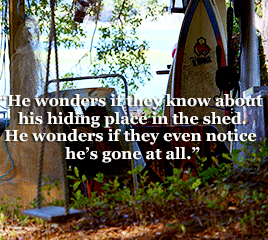
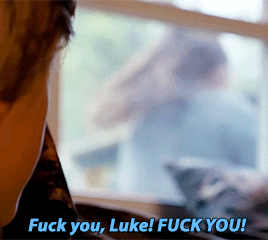

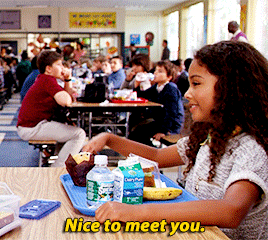
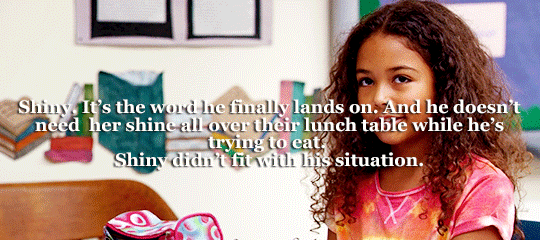

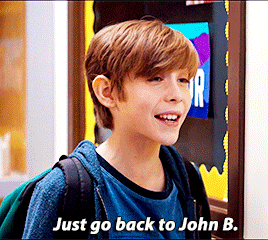
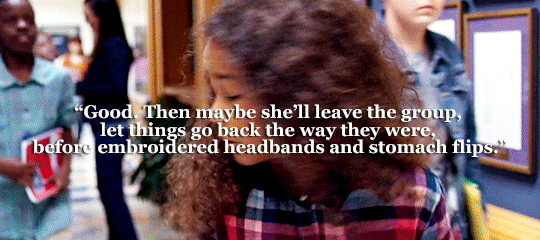
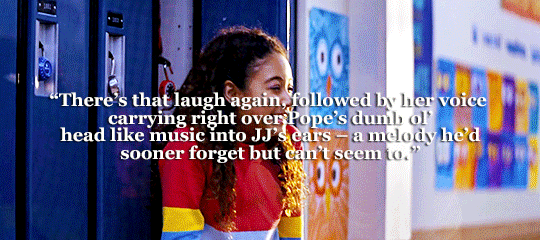

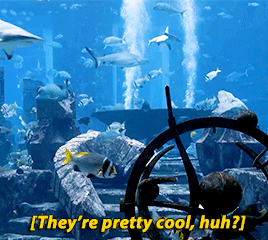

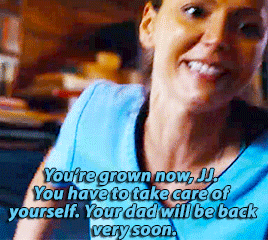
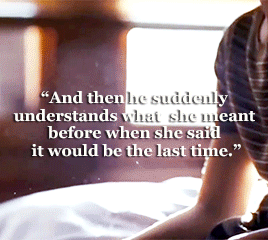
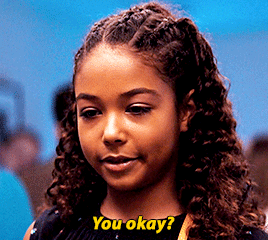
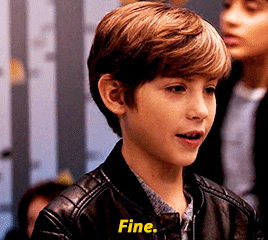

JIARA WEEK 2023 - DAY 6: Fic to gif
↳ Through the storm, We Reach the Shore by @jojameswinter❤️
(Chapter 1/?)
"He assumes the flip in his stomach is just the hunger, but it it’s all very unsettling. He doesn’t need or want any other friends, and he really doesn’t understand why John B decided to randomly bring this girl to their lunch table.
Well. Aside from the obvious. JJ had plenty of shit on his mind and so he wasn’t really there yet – noticing classmates like that.
But other people were.
And she’s exactly the kind of girl that other people (not him) would notice. "

#obx#obxedit#outer banks#jiara#jiaredit#jj maybank#kiara carrera#jj x kie#kie x jj#fic to gif#jiaraweek2023#jiarasource#obxhub#mine#usergrace#userreina#userlinnea#jojameswinter#LAURANA REVOLUTION#ily Diana
76 notes
·
View notes
Text

Waiting With The Coffins Under Heaven
The AAA is not a strand of Posadism and does not share their helpless hopes of communistic Alien salvation or global collapse. Their yearning is the same as the pious Christians, waiting for Christ’s return and direction to a better place in a better time. The lathe of heaven does not exist. It must be built.
Nor does the AAA urge a resignation to one’s docile fate on this planet. However much it hurts to hope for the impossible, to imagine a future we don’t believe in (the Earth being saved, Global revolution, etc.), what matters is the strength we feel every time we don’t bow our heads, every time we destroy the false idols of civilization, every time our eyes meet those of our comrades, every time that our hands set fire to the symbols of Power. In those moments we don’t ask ourselves: ‘Will we win? Will we lose?’ In those moments we just fight. Even if we have no future on this planet, we can still find life on it today. One does not have to return to sleep after the alarm clock rings.
Most importantly, we are not advocating a definitive plan for leaving this planet or for what ought to be done in space. It is left to the self-determination of individuals and unions to decide what is appropriate and ideal for them. The accent is placed not on the content of a choice proposed, but the fact of choosing. Thus, the AAA decision is a decision to decide no longer (that is, the free activity of space without geography would be betrayed if it is subordinated to some conception beforehand.)
As I could sit here and lament about Stanford Toruses, O’Neill Cylinders, and my frothy daydreams of surgically implanting bonsai trees into lungs and dining at souvlaki space stations, but why burden this manuscript with frivolities? Better to go out without constraint later, when day is done, to perfect the design – grown greater in the uncertain twilight of mere dream – in that inward moment that turns upon itself, yet never repeats itself. The AAA is less of an organization than it is a network of individuals and unions cooperatively working toward a defined beginning – leaving this planet. All that can come from the AAA are tools, not answers.
Because as much as this reads as a manifesto, it isn’t one. It is an invitation.
I’ll see you on the dark side of the moon…
Astronauts of all determinations, unite! We have a world to lose, but a universe to gain!
[1] While it is true that the hyperbolic statement of capitalism’s totality ignores the areas of the world unaccosted by its imperialistic desires and the resignation of America to alleged patriots is ignorant of indigenous views, I maintain that one’s theories must be about their real life. I do not aim to provide a comprehensive and impervious blueprint for the AAA. A diverse range of voices is necessary to make the AAA the successful network it could be. Thus, if there is something I left out, that I am mistaken, or there is a correction to be made – write it yourself. The purpose of the AAA is to allow space [pun unintentional] for individuals and affinity groups to act with unrestrained ferocity against systems of domination, while still being connected to a network of people who are interested in similar ideas and who can act in solidarity with each others’ struggles.
#association of autonomous astronauts#intentional communities#outer space#space#astronauts#autonomous zones#autonomy#anarchism#revolution#climate crisis#ecology#climate change#resistance#community building#practical anarchy#practical anarchism#anarchist society#practical#daily posts#communism#anti capitalist#anti capitalism#late stage capitalism#organization#grassroots#grass roots#anarchists#libraries#leftism#social issues
12 notes
·
View notes
Text

Happy Birthday Elizabeth 🥳🎂🎈🎁🎉
March 27,1970
Buon Compleanno 🥳🎂🎈🎁🎉
27 Marzo 1970
#elizabeth mitchell#actress#world cinema#cinema#movies#film#filmography#cinemetography#drama movies#comedy movies#tv shows#90s movies#2000s movies#gia#molly#running#er#lost#lostfandome#juliet burke#revolution#outer banks#first kill#the santa clause#celebrity#happy birthday
3 notes
·
View notes
Text
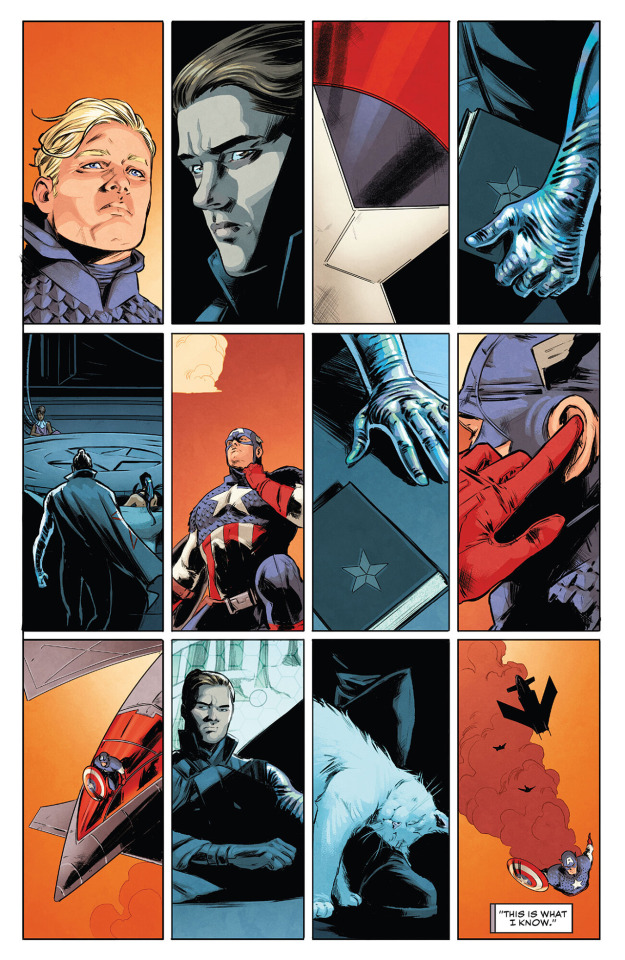
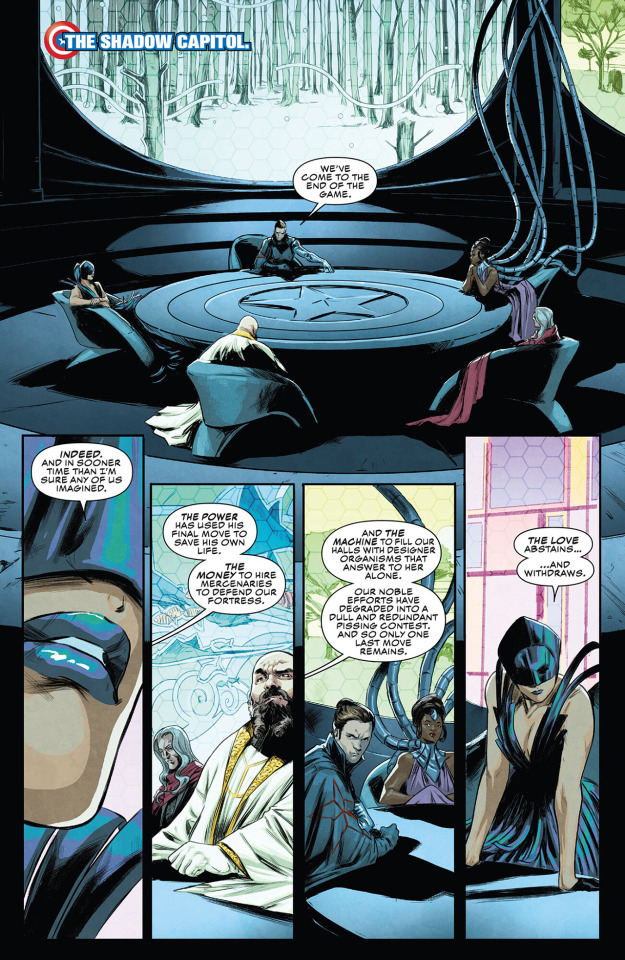
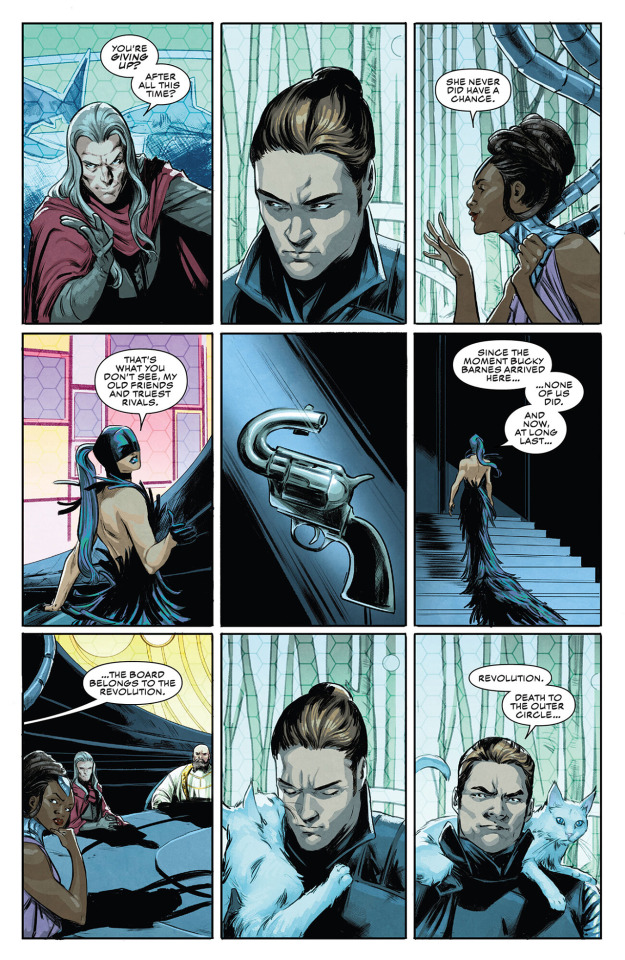
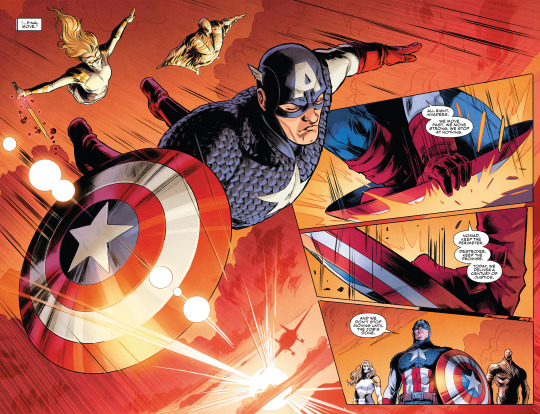



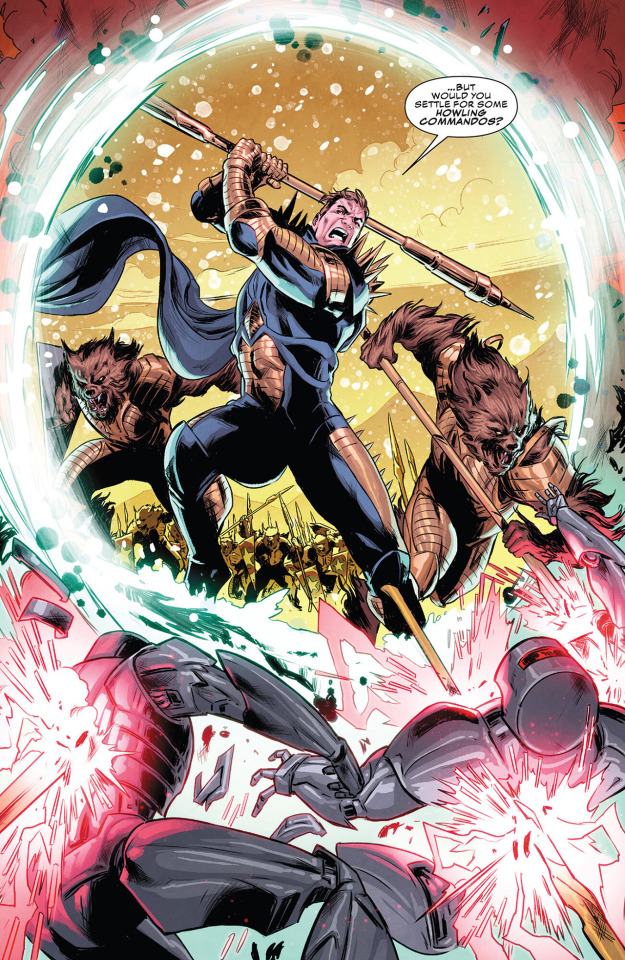
Captain America: Finale #1
#captain america#steve rogers#nomad#destroyer#sharon carter#ian rogers#the outer circle#the new revolution#bucky barnes#the power#the money#the love#the machine#marvel comics#marvel spoilers#matt reads a thing#i posted this
6 notes
·
View notes
Text
Pluto in Aquarius Horoscope
On March 23, 2023, Pluto enters Aquarius. This is a major shift, as the outer planet last switched signs in 2008, when it entered Capricorn. And even more major: Pluto last transited Aquarius in the late 18th Century, bringing about the French and American Revolutions, the Abolitionist Movement, AND the Industrial Revolution. So...yeah, it's a lot.
Of course, Pluto onlly moves through Aquarius for a little while in 2023, before re-entering and staying there from 2024 through 2044. Here's a brief overview of what your sign can expect from this major planetary transit:
Your Pluto in Aquarius Horoscope
Aries: This transit could bring sudden changes to your social circle, but don't be afraid to embrace new connections and ways of thinking.
Taurus: You may feel a desire to break free from old routines and habits. Embrace innovation and don't be afraid to experiment.
Gemini: Pluto in Aquarius may challenge your beliefs and broaden your worldview. Embrace new perspectives and stay open-minded.
Cancer: You could experience changes in your career or public image. Don't be afraid to take risks and embrace your true passion.
Leo: This transit could bring changes to your relationships, but it's a chance to deepen connections and embrace new experiences together.
Virgo: Pluto in Aquarius could bring changes to your health and well-being, but it's a chance to embrace new wellness practices and self-care.
Libra: You may feel a desire to break free from old routines and ways of thinking. Embrace your independence and don't be afraid to be different.
Scorpio: This transit could bring changes to your home and family life, but it's a chance to deepen connections and build a strong foundation for the future.
Sagittarius: You may feel a desire to explore new places and try new things. Embrace your wanderlust and don't be afraid to take risks.
Capricorn: Pluto in Aquarius could bring changes to your finances, but it's a chance to embrace new opportunities and take charge of your financial future.
Aquarius: This transit marks a major turning point for you. Embrace your inner transformation and step into your true power.
Pisces: Pluto in Aquarius could bring changes to your spiritual life and inner world. Embrace new practices and seek deeper understanding.
For more on Pluto in Aquarius, visit my website:
#pluto#pluto in aquarius#astrology#astrology reading#astrology facts#horoscope#monthly horoscope#horoscopes#revolution#progress#darkside#planets#outer planets#aquarius#gemini#libra#pisces#virgo#capricorn#taurus#scorpio#leo#sagittarius#aries#cancer#zodiac#zodaic signs#cosmic#cosmiccannibal#astrology signs
12 notes
·
View notes
Text
Young America racing out into a black stormy night toward the coastline because England’s ship is surely caught in the gale. He doesn’t have shoes or a coat and the wind whips water over everything so fast it’s like ice. America can barely see two inches from his face and the gravely paths tear at the soles of his feet, but he doesn’t stop for a second. As he runs he has to be careful not to drop the lantern, nor the pole he carries and he slams to a stop out on a cliff, rain pelting his face and hiding his terrified tears. His hands shake violently as he secures the lantern to the pole and he desperately brandishes it at the storm, praying it will be enough to get England’s ship safely into the harbor.
#pre-revolution#anyway vienna teng's song Harbor slaps just as hard as Lullaby for a Stormy Night don't @ me#lighthouses weren't really in use in the US until like... the late 1700's so P:#call it nation magic#kinda fascinated by America being the one who stays and waits?? the harbor... the one with the yellow ribbon#idk#it's so counter to the typical characterization but like....#historically America was the homebody#England was the adventurer#but then I maintain that America's love of outer space is directly related to England's love of the horizon#and they both long for the uncharted#so.... idk#America was afraid of losing England to the horizon#England is afraid of losing America to the stars#>.> or smth
28 notes
·
View notes
Text
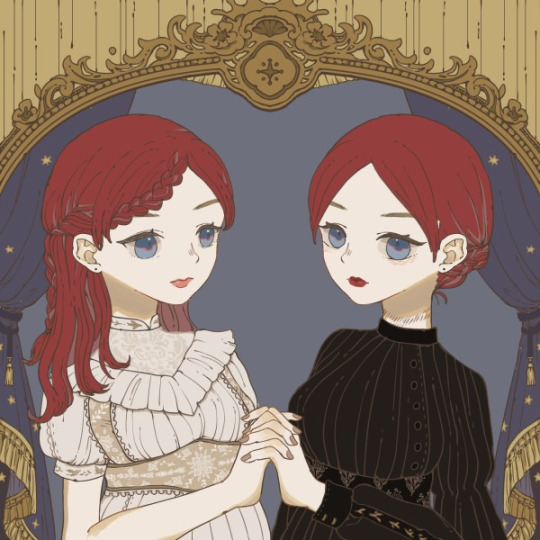
Lady Arachnia Clyne, on the right as a sheltered child unaware of the chaos to come, and on the left as a young woman in mourning, grown old before her time. Note the rope scar on her neck from a failed execution.
#oc#original character#picrew#victorian fashion#edwardian fashion#duality#red hair#growing up#inner child#outer adult#attempted murder tw#Arachnia Clyne#french revolution parallel#black and white#worldbuilding#fantasy
1 note
·
View note
Text
I just realized that Greg's drug friend at the beginning of Jesus revolution is Berry the drug dealer in outer banks!?
2 notes
·
View notes
Text

Pluto has crossed into Aquarius until June 11th, then moves back in to Capricorn until January 20 then fully steps into Aquarius until March 8th 2043 Pluto is the planet of Life - Death - Rebirth. Destruction to that which no longer serves us. Aquarius rules the higher mind and is the planet of revolution!
#astrology#sacred soul astrology#astrology readings#outer planets#astrology transits#aquarius#pluto in aquarius#pluto#life death rebirth#transformation#revolution#new beginnings#rich witch#magick#rituals#ceremony
1 note
·
View note
Text
New Fiction 2023 - February
"Psalms" (101-150) ed. Richard Challoner (1752)
I’ll be honest, I just read Proverbs and now it blends in completely with whatever Psalms had going on. What I do remember of Psalms is realizing that a lot of what the ol’ Father is preaching at the pulpit is one-liners from this section of the bible.
Abyss by David Weddle & Jeffrey Lang (2001)
These DS9 novels spend a lot of time with Bashir and Dax as a couple, working out their couple stuff. I suppose they’re really the only couple available in these early releases of the relaunch, but I hope we get to see other perspectives on romantic relationships. But otherwise, it’s a neat and tidy little adventure, and I like the scenes in which a Jem’Hadar ally has to observe these weird humans and basically ask them “what the hell are you doing?”
"The Hole in the Wall" by Angela Hsieh (2022)
The hand in a hole! It’s great.
Men in Black: The Game dev. Gigawatt Studios & The Collective (1998)
Whoof. I mean, WHOOF. I would’ve been in for a survival horror game featuring the Men in Black, but then there’s awkward quips because it’s a comedy, and unnecessary action gameplay.
The Game of Life dev. Mass Media & The Collective (1998)
This was shockingly fun. A board game made into a video game could be so clunky and boring but this really felt like a neat way to play, as dated as the visual are by now.
"An Ostrich Told Me the World Is Fake and I Think I Believe It" dir. Lachlan Pendragon (2022)
This is so clever and well done.
"The Flying Sailor" dir. Amanda Forbis & Wendy Tilby (2022)
Oh no, but somehow it has a happy ending.
"Ice Merchants" dir. João Gonzalez (2022)
This is sweet and I only cried a little.
"The Boy, the Mole, the Fox and the Horse" dir. Peter Baynton & Charlie Mackesy (2022)
So blaaaannnnd but it’s really good looking.
"My Year of Dicks" dir. Sara Gunnarsdóttir (2022)
Hey, she makes lists like I make lists.
"Ivalu" dir. Anders Walter & Pipaluk K. Jørgensen (2022)
I don’t know why we allow ourselves to succumb to the basest horrors.
"Night Ride (Nattrikken)" dir. Eirik Tveiten (2020)
So fuckin’ tense, holy shit. Just know it turns out okay.
"Le Pupille" dir. Alice Rohrwacher (2022)
This was a riot.
"The Red Suitcase" dir. Cyrus Neshvad (2022)
Another tense one!
"An Irish Goodbye" dir. Tom Berkeley & Ross White (2022)
It’s not easy, all I’m saying.
Groundhog Day dir. Harold Ramis (1993)
Finally watched this in a theater! On groundhog day! That’s how I wanna watch all date-specific movies from now on. It’s so wild that this is likely the origin of the modern time loop narrative.
Infinity Pool dir. Brandon Cronenberg (2023)
Jesus Christ, it just kinda goes on, getting more and more awful. But the final scenes bring it home for me.
80 for Brady dir. Kyle Marvin (2023)
This is so quaint in that “we don’t see movies like these in theaters” sorta way.
Magic Mike dir. Steven Soderbergh (2012)
Mike’s dream is so wholesome, he deserves it.
Living dir. Oliver Hermanus (2022)
I liked this. It reminds us that you can’t save the world, but you can help someone next to you.
Magic Mike XXL dir. Gregory Jacobs (2015)
This was just the victory lap after the success of the first. One more round.
She Came from the Woods dir. Erik Bloomquist (2022)
I see these smaller horror movies release to theaters every now and then. It fills a genre niche between larger mass audience stuff, but this particular was just a little undercooked. The Fear Street trilogy did it better.
Magic Mike's Last Dance dir. Steven Soderbergh (2023)
Sad to say, even the expected big dance number at the end doesn’t save it.
Knock at the Cabin dir. M. Night Shyamalan (2023)
I kept feeling bad for Shyamalan. The weight of expectation for him must be immense. But I came in with that expectation of something that would surprise me and this movie does not deliver on that front.
Sword Art Online the Movie -Progressive- Scherzo of Deep Night dir. Ayako Kono (2023)
Holy shit! Anime movies is another random thing to pop up in theaters and sometimes they’re a bit too convoluted or reliant on their main series to explain things, but the premise of “we’re stuck in a video game and need to fight a boss” really makes this work. Loved that final boss battle.
Consecration dir. Christopher Smith (2023)
Another quaint sort of slow burn horror release that doesn’t get to theaters as often these days. It doesn’t stick but it was interesting to watch.
Winnie-the-Pooh: Blood and Honey dir. Rhys Waterfield (2023)
Great effects and staging, awful otherwise. One of those that might please those who are in it for the gore.
Ant-Man and the Wasp: Quantumania dir. Peyton Reed (2023)
Jonathan Majors, that is all.
Johnny Mnemonic dir. Robert Longo (1995)
It was cool 90s cyberpunk but did you know there’s a black & white take on it?!
Virtuosity dir. Brett Leonard (1995)
Kind of a dystopian sci-fi take on Se7en.
Jesus Revolution dir. Jon Erwin & Brent McCorkle (2023)
I was real afraid that this would be a pro-Christianity all the time kinda movie, but there’s enough nuance there in depicting real people that I think it’s worth watching as a historical snapshot.
Cocaine Bear dir. Elizabeth Banks (2023)
Absolutely yes, let’s fuckin’ go. This is made to be seen in a theater.
Gattaca dir. Andrew Niccol (1997)
More somber and lowkey than I expected. It felt like a high budget episode of The Twilight Zone.
Strange Days dir. Kathryn Bigelow (1995)
Another whoof for rich white people trying to translate the experiences of real socioeconomic and racial problems in Los Angeles of the 90s (and today). But fun in a nostalgic “look what they thought the future would be” kinda way.
Kissed dir. Lynne Stopkewich (1996)
Molly Parker makes anything she’s in worth watching, even necrophilia.
Richard III dir. Richard Loncraine (1995)
Catching up on more Shakespeare that I’ve missed over the years. This one’s a real good way to translate this old timey kingdom stuff.
Eye for an Eye dir. John Schlesinger (1996)
Guh, I really thought there might be some attempt to comment on the perils of seeking revenge, but nope, let’s just fucking murder assholes who do wrong against us.
The Outer Limits - Seasons 4-6 (1998-2000)
So much Outer Limits, it’s hard to encapsulate as I approach the end of it. All I’ll say is that “Down to Earth” from season 6 has me tearing up because most of it is a satire about weirdo X-Files fans but then the main character’s motivation to just connect with someone, anyone who will believe her and allow her to express her loss and just listen makes the ending so tragic and gah this is absolutely in my list of TV that will shape who I am as a person.
#new fiction#2023#the outer limits#eye for an eye#richard iii#kissed#strange days#gattaca#cocaine bear#jesus revolution#virtuosity#johnny mnemonic#ant-man and the wasp: quantumania#winnie the pooh: blood and honey#consecration#sword art online#knock at the cabin#magic mike#she came from the woods#living#80 for brady#infinity pool#groundhog day
0 notes
Text

Always Falling
Life on this planet is unsatisfactory. Yet we are not resigned to it. We refuse to be fooled. We fear nothing: being misunderstood, being criticized, being labelled ‘jokers’ or ‘insane’, suffering, life or death – nothing. We are neither dreamers nor idealists nor unrealistic… The AAA is an attitude of reaction, defiance, and distrust. A distrust of the illusory philosophies at the level of the naïve, a distrust of unctuous and sonorous morals…
No galaxy is obscure… So as not to be overloaded with rhetoric or cloying sincerity, the astronaut’s message is no less a song in which emotion’s modesty dismisses fine transports.
When a spider flings itself from a fixed point down into its consequences, it continually sees before it an empty space in which it can find no foothold, however much it stretches. And yet, it finds corners and crevices to build its place of rest, its source of nourishment. So it is with the AAA; before us is continually an empty space, and we are propelled by the conditions that lie behind us. What is going to happen? What will the future bring? I do not know, I offer no presentiment.
Those who consider our goals impossible to achieve will necessarily find our methods impossible to think. Trapped in the false permanency and ahistoricism of the spectacle, these “realistic” pro-revolutionaries are quick to assure our naivety and imploring failure. But why not fail?
Is the guarantee of dying from boredom recourse from the risk of dying from spaghettification?
Perhaps knowing there is no future is our greatest freedom.
#association of autonomous astronauts#intentional communities#outer space#space#astronauts#autonomous zones#autonomy#anarchism#revolution#climate crisis#ecology#climate change#resistance#community building#practical anarchy#practical anarchism#anarchist society#practical#daily posts#communism#anti capitalist#anti capitalism#late stage capitalism#organization#grassroots#grass roots#anarchists#libraries#leftism#social issues
11 notes
·
View notes
Text

Happy Birthday Jonathan +24 🥳🎂🎈🎁🎉
Buon Compleanno 🥳🎂🎈🎁🎉
#jonathan daviss#actor#world cinema#cinema#movies#film#cinemetography#filmography#comedy movies#drama movies#tv shows#2000s movies#2000s tv shows#edge of the world#ageofsummer#do revenge#revolution#lastnight#outer banks#pope heyward#outerbanksfandome#celebrity#happy birthday
2 notes
·
View notes
Text



Travel back [...] a few hundred years to before the industrial revolution, and the wildlife of Britain and Ireland looks very different indeed.
Take orcas: while there are now less than ten left in Britain’s only permanent (and non-breeding) resident population, around 250 years ago the English [...] naturalist John Wallis gave this extraordinary account of a mass stranding of orcas on the north Northumberland coast [...]. If this record is reliable, then more orcas were stranded on this beach south of the Farne Islands on one day in 1734 than are probably ever present in British and Irish waters today. [...]
Other careful naturalists from this period observed orcas around the coasts of Cornwall, Norfolk and Suffolk. I have spent the last five years tracking down more than 10,000 records of wildlife recorded between 1529 and 1772 by naturalists, travellers, historians and antiquarians throughout Britain and Ireland, in order to reevaluate the prevalence and habits of more than 150 species [...].
In the early modern period, wolves, beavers and probably some lynxes still survived in regions of Scotland and Ireland. By this point, wolves in particular seem to have become re-imagined as monsters [...].
Elsewhere in Scotland, the now globally extinct great auk could still be found on islands in the Outer Hebrides. Looking a bit like a penguin but most closely related to the razorbill, the great auk’s vulnerability is highlighted by writer Martin Martin while mapping St Kilda in 1697 [...].
[A]nd pine martens and “Scottish” wildcats were also found in England and Wales. Fishers caught burbot and sturgeon in both rivers and at sea, [...] as well as now-scarce fishes such as the angelshark, halibut and common skate. Threatened molluscs like the freshwater pearl mussel and oyster were also far more widespread. [...]
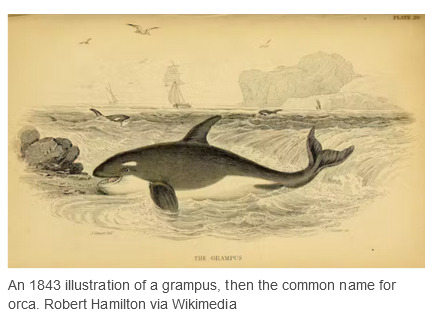
Predators such as wolves that interfered with human happiness were ruthlessly hunted. Authors such as Robert Sibbald, in his natural history of Scotland (1684), are aware and indeed pleased that several species of wolf have gone extinct:
There must be a divine kindness directed towards our homeland, because most of our animals have a use for human life. We also lack those wild and savage ones of other regions. Wolves were common once upon a time, and even bears are spoken of among the Scottish, but time extinguished the genera and they are extirpated from the island.
The wolf was of no use for food and medicine and did no service for humans, so its extinction could be celebrated as an achievement towards the creation of a more civilised world. Around 30 natural history sources written between the 16th and 18th centuries remark on the absence of the wolf from England, Wales and much of Scotland. [...]

In Pococke’s 1760 Tour of Scotland, he describes being told about a wild species of cat – which seems, incredibly, to be a lynx – still living in the old county of Kirkcudbrightshire in the south-west of Scotland. Much of Pococke’s description of this cat is tied up with its persecution, apparently including an extra cost that the fox-hunter charges for killing lynxes:
They have also a wild cat three times as big as the common cat. [...] It is said they will attack a man who would attempt to take their young one [...]. The country pays about £20 a year to a person who is obliged to come and destroy the foxes when they send to him. [...]
The capercaillie is another example of a species whose decline was correctly recognised by early modern writers. Today, this large turkey-like bird [...] is found only rarely in the north of Scotland, but 250–500 years ago it was recorded in the west of Ireland as well as a swathe of Scotland north of the central belt. [...] Charles Smith, the prolific Dublin-based author who had theorised about the decline of herring on the coast of County Down, also recorded the capercaillie in County Cork in the south of Ireland, but noted: This bird is not found in England and now rarely in Ireland, since our woods have been destroyed. [...] Despite being protected by law in Scotland from 1621 and in Ireland 90 years later, the capercaillie went extinct in both countries in the 18th century [...].
---
Images, captions, and text by: Lee Raye. “Wildlife wonders of Britain and Ireland before the industrial revolution – my research reveals all the biodiversity we’ve lost.” The Conversation. 17 July 2023. [Map by Lee Raye. Bold emphasis and some paragraph breaks/contractions added by me.]
1K notes
·
View notes
Text
🍀 Lucky Astro Aspects
🎆 Venus-Jupiter Conjunct When Venus and Jupiter get together, it's like a party all the time. Love and abundance are the life of the party. It's like a match made in heaven, where romance and good fortune collide and explode like fireworks.

🧠 Sun-Mercury Conjunct When the Sun and Mercury join forces, it's like a power duo of intellect and self-expression. It's like having a brilliant idea and the confidence to shout it from the rooftops. Conversations tend to be where the spotlight is on your mind and your words.

😍 Asc-Venus Trine When your Ascendant and Venus form a trine, your beauty and charm are your secret weapons. It's like having a personal stylist, making you irresistible to others. It's a harmonious dance where your outer appearance and inner magnetism align perfectly.

👩🏽⚖️ Saturn-Sun Conjunct When Saturn and the Sun come together, it's like a reality check where discipline and ambition take center stage. It's like having a strict but loving mentor pushing you to reach your full potential. It's a serious aspect that demands hard work and perseverance.

💋 Mercury-Venus Sextile When Mercury and Venus form a sextile, it's like a flirtation where wit and charm create sparks of connection. It's like having the gift of gab and the ability to make others swoon with your words. It's a playful conversation where your mind and heart dance in perfect harmony.

🦄 Uranus-Venus Trine When Uranus and Venus form a trine, it's like a love revolution where uniqueness and passion blend seamlessly. It's like having a style that breaks all the rules and sets your heart on fire. It's an electrifying feeling where love and freedom go hand in hand.

🛸 Venus-Neptune Conjunct When Venus and Neptune align, it's like a dreamland where love and art intertwine. It's like falling into a romantic fantasy where everything is beautiful and enchanting. It's a poetic dance where your heart and imagination create a masterpiece.

💪🏾 Mars-Sun Trine When Mars and the Sun form a trine, it's like a cosmic power surge where energy and determination unite. It's like having the drive and confidence to conquer any challenge that comes your way. It's a fiery alliance where your actions speak louder than words.

👣 Mars-Jupiter Conjunct When Mars and Jupiter join forces, it's like an adventure where passion and optimism collide. It's like having the courage and luck to pursue your wildest dreams. It's an epic journey where your ambition and enthusiasm know no bounds.
💟 Moon-Venus Sextile When the Moon and Venus form a sextile, it's like a love letter where emotions and beauty intertwine. It's like being in touch with your heart's desires and expressing them with grace. It's a tender connection where your feelings and aesthetics create a harmonious symphony.

😁 Moon-Jupiter Conjunct When the Moon and Jupiter align, it's like a celebration where emotions and expansion go hand in hand. It's like having a heart full of joy and optimism that radiates to everyone around you. It's a nurturing bond where your intuition and abundance align perfectly.
#astrology aspects#venus#jupiter#good luck#astrology observations#occult#beauty#aesthetic#love astrology#money astrology
359 notes
·
View notes
Note
Wtf is Lancer and why is it shit (serious question)
lancer is a tabletop roleplaying game made by the guy who drew kill six billion demons and another guy. i wouldn't call it 'shit', necessarily--it's good in a lot of the ways that matter. it's first and foremost a tactical mech combat game and on that level it's incredible. its ruleset is finely tuned, provides great amounts of GM support to make running what might otherwise be overwhelmingly crunchy combat easier, and has a truly stunning and cool level of character customization available. so as a game, i think it's great fun to play and run, genuinely innovative, and a huge step forward for battlemap tactical wargame type TTRPGs in general.
the lore though, kind of sucks. i think it has two clear and overlapping core problems. problem #1 is that it is a utopia as envisioned by a social democrat. it's a world which the text describes as 'post-capitalist' (but there are still evil megacorporations with private armies who own slaves) and 'post-scarcity' (but only in the developed 'core' systems, so. y'know. there's scarcity). at many points in the text they say that Union (the game's main faction) is utopian, throwing around that exact word a bunch of times as well as 'mutual aid' and 'direct action' and the like. but what they describe is just kind of an imperialist Space Sweden with several distinct forms of slavery that constantly expands and uses its Benevolent Imperial Power to intervene on the Backwards Violent Worlds on its outer border but its good because its just trying to bring them UBI.
to show what i mean, here's one of the game's writers¹ talking about how it would be morally wrong for Union to, say, appropriate the property of a private military corporation that also operates as a fascist nation-state:

it's 'revolution' as imagined by the limpest of social democrats. and of course this would honestly be fine, whatever, most sci-fi settings are fundamentally achingly liberal, but the game goes so out of its way to signpost how Radical it is and how Hopeful and Liberationist you're meant to see the setting as
the other core problem is closely related--it feels like the lancer guys put every cool sci-fi idea they had into lancer even when it completely clashes with the core ideas behind it. like, AIs in this settings are callled 'NHPs' (non-human persons) and they're eldritch god-like beings from another dimension who have be kept 'shackled' (lancer's words, not mine!) to keep them as pliant and obedient AI assistants instead of hostile eldritch abominations. this is obviously horrifying and dystopian but it rules, it would be sick fucking worldbuilding for something with the tone of 40k or a one-off doctor who or star trek episode--but as a fundamental technology foundational to what we are supposed to believe is a post-revolutionary society founded on mutual aid and solidarity and blah blah blah it's glaringly dissonant.
bear in mind this is all just going off the rulebook. lancer fans have told me that the supplements and campaign modules fix some of this or contextualise it. but on the other hand communists have told me that they make it worse and i trust the communists more. i leave you with this incredible passage from the game's foreword:

284 notes
·
View notes
Note
How did cotton win over linen anyway?
In short, colonialism, slavery and the industrial revolution. In length:
Cotton doesn't grow in Europe so before the Modern Era, cotton was rare and used in small quantities for specific purposes (lining doublets for example). The thing with cotton is, that's it can be printed with dye very easily. The colors are bright and they don't fade easily. With wool and silk fabrics, which were the more traditional fabrics for outer wear in Europe (silk for upper classes of course), patterns usually needed to be embroidered or woven to the cloth to last, which was very expensive. Wool is extremely hard to print to anything detailed that would stay even with modern technology. Silk can be printed easily today with screen printing, but before late 18th century the technique wasn't known in western world (it was invented in China a millenium ago) and the available methods didn't yeld good results.
So when in the late 17th century European trading companies were establishing trading posts in India, a huge producer of cotton fabrics, suddenly cotton was much more available in Europe. Indian calico cotton, which was sturdy and cheap and was painted or printed with colorful and intricate floral patters, chintz, especially caught on and became very fashionable. The popular Orientalism of the time also contributed to it becoming fasionable, chintz was seen as "exotic" and therefore appealing.
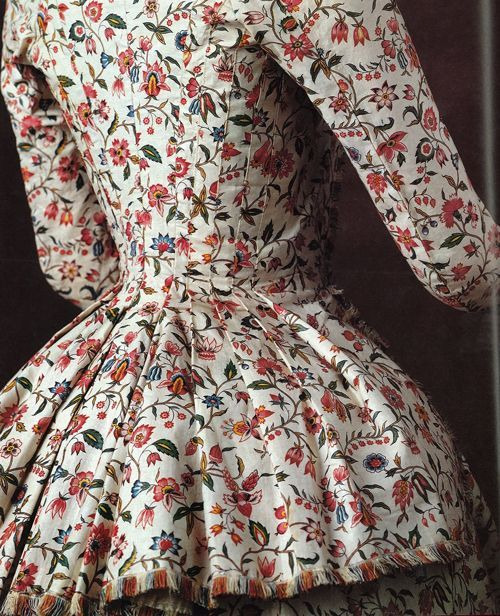
Here's a typical calico jacket from late 18th century. The ones in European markets often had white background, but red background was also fairly common.
The problem with this was that this was not great for the business of the European fabric producers, especially silk producers in France and wool producers in England, who before were dominating the European textile market and didn't like that they now had competition. So European countries imposed trade restrictions for Indian cotton, England banning cotton almost fully in 1721. Since the introduction of Indian cottons, there had been attempts to recreate it in Europe with little success. They didn't have nearly advanced enough fabric printing and cotton weaving techniques to match the level of Indian calico. Cotton trade with India didn't end though. The European trading companies would export Indian cottons to West African market to fund the trans-Atlantic slave trade that was growing quickly. European cottons were also imported to Africa. At first they didn't have great demand as they were so lacking compared to Indian cotton, but by the mid 1700s quality of English cotton had improved enough to be competitive.
Inventions in industrial textile machinery, specifically spinning jenny in 1780s and water frame in 1770s, would finally give England the advantages they needed to conquer the cotton market. These inventions allowed producing very cheap but good quality cotton and fabric printing, which would finally produce decent imitations of Indian calico in large quantities. Around the same time in mid 1700s, The East Indian Company had taken over Bengal and soon following most of the Indian sub-continent, effectively putting it under British colonial rule (but with a corporate rule dystopian twist). So when industrialized English cotton took over the market, The East India Company would suppress Indian textile industry to utilize Indian raw cotton production for English textile industry and then import cotton textiles back to India. In 1750s India's exports were mainly fine cotton and silk, but during the next century Indian export would become mostly raw materials. They effectively de-industrialized India to industrialize England further.
India, most notably Bengal area, had been an international textile hub for millennia, producing the finest cottons and silks with extremely advance techniques. Loosing cotton textile industry devastated Indian local economies and eradicated many traditional textile craft skills. Perhaps the most glaring example is that of Dhaka muslin. Named after the city in Bengal it was produced in, it was extremely fine and thin cotton requiring very complicated and time consuming spinning process, painstakingly meticulous hand-weaving process and a very specific breed of cotton. It was basically transparent as seen depicted in this Mughal painting from early 17th century.
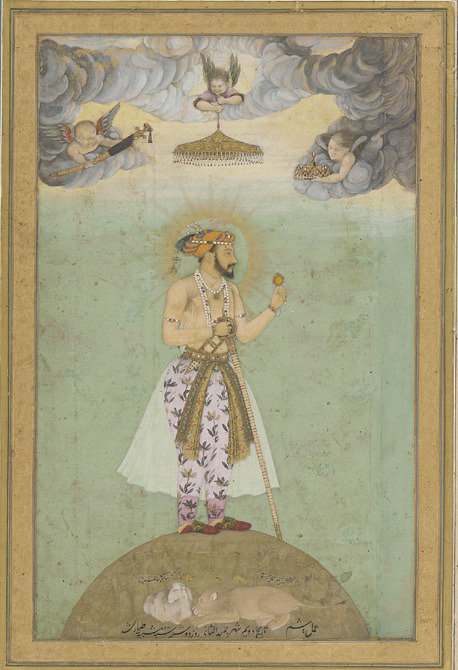
It was used by e.g. the ancient Greeks, Mughal emperors and, while the methods and it's production was systematically being destroyed by the British to squash competition, it became super fashionable in Europe. It was extremely expensive, even more so than silk, which is probably why it became so popular among the rich. In 1780s Marie Antoinette famously and scandalously wore chemise a la reine made from multiple layers of Dhaka muslin. In 1790s, when the empire silhouette took over, it became even more popular, continuing to the very early 1800s, till Dhaka muslin production fully collapsed and the knowledge and skill to produce it were lost. But earlier this year, after years lasting research to revive the Dhaka muslin funded by Bangladeshi government, they actually recreated it after finding the right right cotton plant and gathering spinners and weavers skilled in traditional craft to train with it. (It's super cool and I'm making a whole post about it (it has been in the making for months now) so I won't extend this post more.)


Marie Antoinette in the famous painting with wearing Dhaka muslin in 1783, and empress Joséphine Bonaparte in 1801 also wearing Dhaka muslin.
While the trans-Atlantic slave trade was partly funded by the cotton trade and industrial English cotton, the slave trade would also be used to bolster the emerging English cotton industry by forcing African slaves to work in the cotton plantations of Southern US. This produced even more (and cheaper (again slave labor)) raw material, which allowed the quick upward scaling of the cotton factories in Britain. Cotton was what really kicked off the industrial revolution, and it started in England, because they colonized their biggest competitor India and therefore were able to take hold of the whole cotton market and fund rapid industrialization.
Eventually the availability of cotton, increase in ready-made clothing and the luxurious reputation of cotton lead to cotton underwear replacing linen underwear (and eventually sheets) (the far superior option for the reasons I talked about here) in early Victorian Era. Before Victorian era underwear was very practical, just simple rectangles and triangles sewn together. It was just meant to protect the outer clothing and the skin, and it wasn't seen anyway, so why put the relatively scarce resources into making it pretty? Well, by the mid 1800s England was basically fully industrialized and resource were not scarce anymore. Middle class was increasing during the Victorian Era and, after the hard won battles of the workers movement, the conditions of workers was improving a bit. That combined with decrease in prices of clothing, most people were able to partake in fashion. This of course led to the upper classes finding new ways to separate themselves from lower classes. One of these things was getting fancy underwear. Fine cotton kept the fancy reputation it had gained first as an exotic new commodity in late 17th century and then in Regency Era as the extremely expensive fabric of queens and empresses. Cotton also is softer than linen, and therefore was seen as more luxurious against skin. So cotton shifts became the fancier shifts. At the same time cotton drawers were becoming common additional underwear for women.
It wouldn't stay as an upper class thing, because as said cotton was cheap and available. Ready-made clothing also helped spread the fancier cotton underwear, as then you could buy fairly cheaply pretty underwear and you didn't even have to put extra effort into it's decoration. At the same time cotton industry was massive and powerful and very much eager to promote cotton underwear as it would make a very steady and long lasting demand for cotton.
In conclusion, cotton has a dark and bloody history and it didn't become the standard underwear fabric for very good reasons.
Here's couple of excellent sources regarding the history of cotton industry:
The European Response to Indian Cottons, Prasannan Parthasarathi
INDIAN COTTON MILLS AND THE BRITISH ECONOMIC POLICY, 1854-1894, Rajib Lochan Sahoo
#i have fixed the wording in the beginning so it doesn't sound like i'm saying cotton in general dyed better than wool or silk#answers#fashion history#historical fashion#history#textile history#dress history#historical clothing#indian history#colonial history#indian textiles#cotton#slavery
2K notes
·
View notes